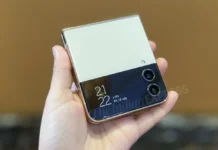Auto focus technology forms one of the key pillars of mobile photography – as it goes on to ensure that clean photos are taken – even when we account the fastest of moving objects. Interestingly enough though, auto focusing actually comes in a variety of different types, all of which depend upon the sensor that is present within your smartphone.
What is PDAF actually?
Much like all of the great camera technologies that are found within smartphones these days, PDAF too traces its roots back to the DSLR. Indeed DSLR camera proceed on to use mirrors in order to reflect copies of the main sensor’s light at a dedicated phase detection sensor. Smartphones unfortunately don’t have the same luxury as there just isn’t enough space to fit all the parts in. Instead of course, mobile sensors have in place dedicated PDAF pixels which are built into the image sensor – an approach which happens to be borrowed from compact cameras.
Must Read : Surface Duo To Launch Next Month With Windows 10
So how does PDAF work? Well, think about the light that passes the camera lens at the very extreme edges. When in perfect focus, light from even these extremes will refract back in order to meet at an exact point on the camera sensor. A blurry image comes as a direct consequence of this focus/meeting point being set either in front or indeed behind the image sense. Via the adjustment of the lens in order to change this focal point is exactly how camera focusing works.
In simple words, we can actually tell whether or not an image is in focus because of the fact that even though light comes in from two different points – they go on to converge on a single point. The phase detection auto focus cameras that are present within a DSLR make use of two dedicated PDAF sensor in order to capture separate images for the sake of comparison.




